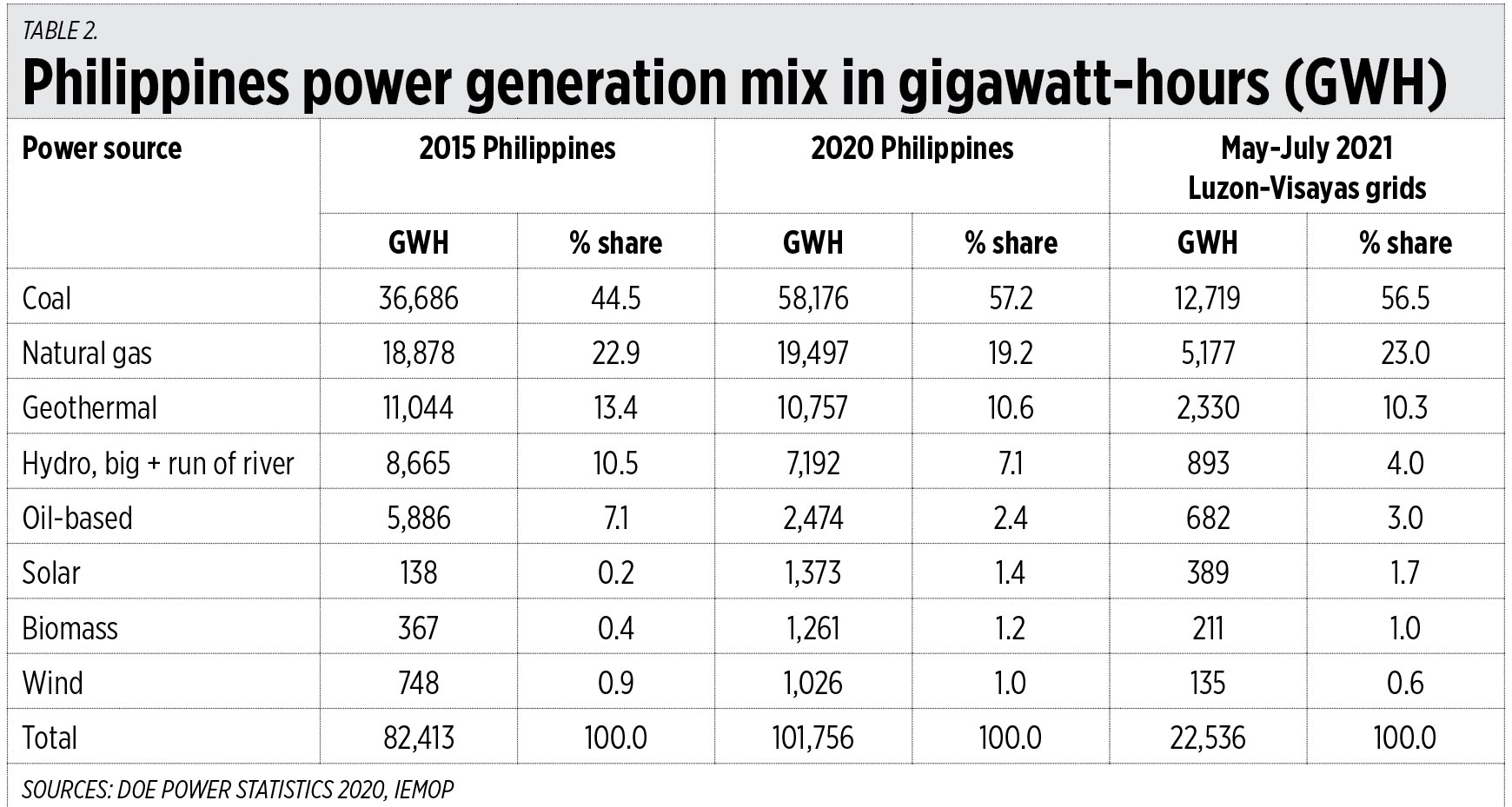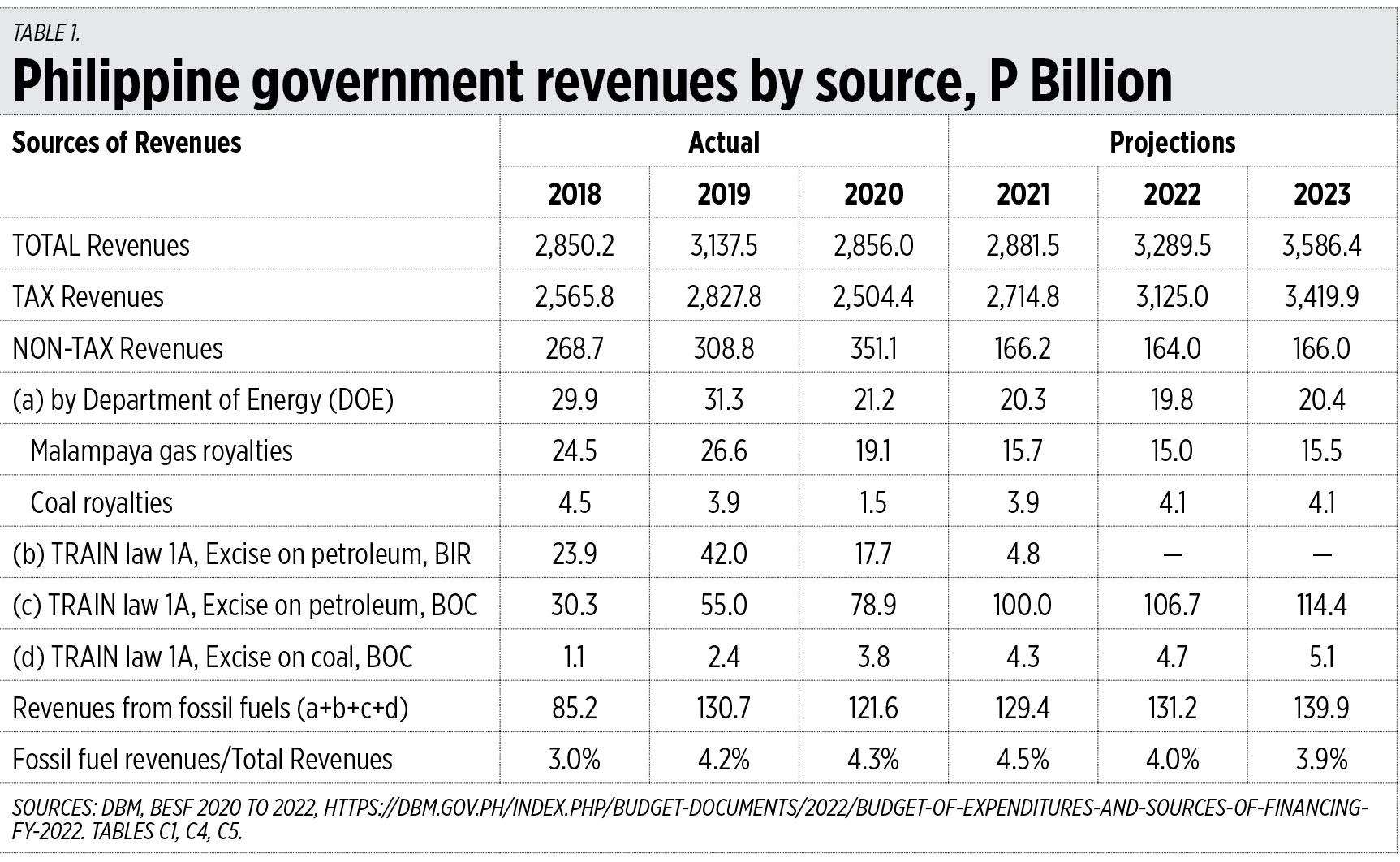Ten trends in fossil fuel taxation and power generation
Ten trends in fossil fuel taxation and power generation
Ten trends in fossil fuel taxation and power generation
August 30, 2021 6:32 pm

My Cup Of Liberty
Bienvenido S. Oplas, Jr.
A
fter food, air, and water, humanity’s second most useful commodities would be fossil fuels. From fishing and sea transport, farming and land transport, storage, air transport and electricity generation, their value and usefulness are beyond question.
Yet fossil fuels are also the most politicized, demonized, most taxed commodities for supposedly causing “environmental damage,” “carbon pollution,” and the “climate crisis.”
I checked revenue data for the P5.024 trillion proposed 2022 budget from the Department of Budget and Management (DBM), Budget of Expenditures and Sources of Financing (BESF) 2022. Seven trends can be inferred from the numbers (
see Table 1
).
One, excise tax from petroleum products collected by both the Bureau of Internal Revenue (BIR) and Bureau of Customs (BoC) were huge at P97 billion/year in 2019-2020, and projected to rise further to P108.6 billion/year from 2021-2023.
Two, royalties from Malampaya gas are still big — P23.4 billion/year from 2018-2020 — but this is projected to decline to P15.4 billion/year from 2021-2023.
Three, coal royalties plus excise tax on coal was modest at P5.7 billion/year from 2018-2020 but expected to rise to P8.7 billion/year from 2021-2023.
Four, combined taxes plus non-tax/royalties from fossil fuels were huge at P112.5 billion/year from 2018-2020, and estimated to rise to P133.5 billion/year from 2021-2023.
Five, the share of revenues from fossil fuels constituted on average 3.8% of total revenues of the government from 2018-2020, and is seen to rise slightly to 4.1% of total revenues from 2021-2023.
Six, these revenues are on fossil fuel products only and do not include corporate income tax, VAT and non-tax (regulatory fees, fines, etc.) collection from companies that extract, refine, transport, and distribute fossil fuel products. Also, these do not include the personal income taxes of people working in these companies.
Seven, the huge taxes and royalties from fossil fuels were really meant to finance the various spending and bureaucracies, national and local, and have little or nothing to do with the narratives of fighting “carbon pollution/climate crisis.”
Meanwhile last week, the Independent Electricity Market Operator of the Philippines (IEMOP) conducted its monthly media briefing and among the data presented was the power generation mix for the Luzon-Visayas grids until July 2021.
To give further context, I added the national power generation mix in 2020 and 2015, and the Feed-in Tariff Allowance (FiT-All) that was granted starting 2015. Three more trends in fossil fuel contribution to power generation mix cropped up (
see Table 2
).

So, eight, fossil fuel-based power plants — coal, natural gas and oil — remain the workhorses of the Philippines’ power generation to avoid blackouts. They contributed 74.5% of total electricity production in 2015, which rose to 78.8% in 2020, and 82.5% in May-July 2021.
Nine, the share of conventional renewables — geothermal and hydro — has been declining, from 23.9% of total power generation in 2015, to 17.7% in 2020, and 14.3% in May-July 2021.
Ten, the share of favored renewable energy (RE) — wind, solar, and biomass — hardly improved, from 1.5% of total power generation in 2015, to 3.6% in 2020, and 3.3% in May-July 2021.
Then consider these three recent reports in
BusinessWorld
: “TransCo proposes FiT-All rate of P0.3320/kWh” (Aug. 18), “RE preferences seen needed to ensure industry takes off” (Aug. 25), “DoE orders Napocor to resolve Mindoro power issues; improvements expected by end of September (Aug. 27).
Higher Fit-All is further proof that the renewables law of 2008 was meant to enrich mainly wind-solar developers whose FiT rates per kwh are nearly double the FiT rates for biomass and run-of-river hydro, make electricity more unstable and more expensive for consumers. And these RE backers want more preferences, more favoritism “to take off.”
And then there is the never-ending financial-technical problems of many provincial electric cooperatives (ECs). Last week the Philippine Rural Electric Cooperatives Assn., Inc. (PhilRECA) issued a statement defending the administrator of the National Electrification Administration (NEA) from corruption charges.
I am not privy to these allegations and counter-allegations, but that big ECs with multi-millions in assets remain under the political protection of a political body called NEA can raise political suspicions. The NEA has a budget of P12.9 billion in 2020, P2.5 billion in 2021, and a proposed budget of P1.8 billion in 2022. We have one-person corporations under the Securities and Exchange Commission (SEC) and yet those huge ECs do not want more transparent rules of SEC to guide them and prefer the political cover by NEA. Not good. All these ECs should become corporations someday.
Bienvenido S. Oplas, Jr. is the Director for Communication and Corporate Affairs, Alas Oplas & Co. CPAs

